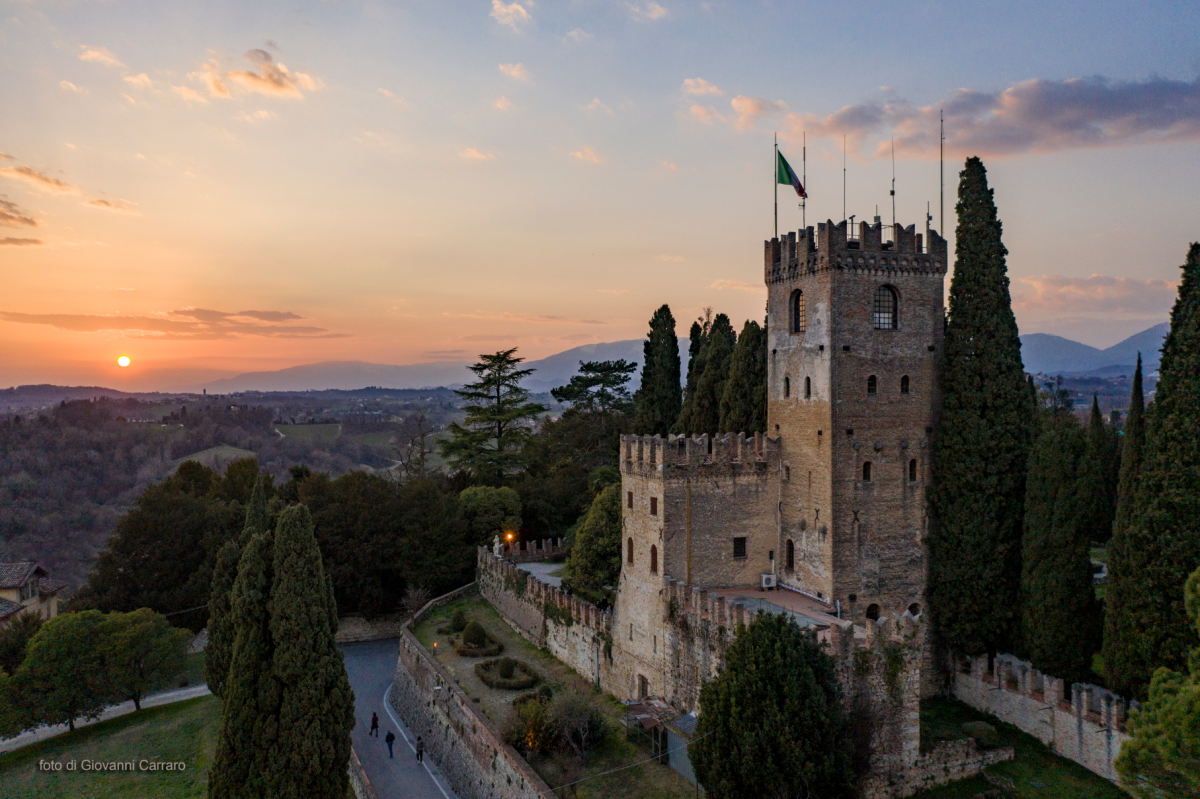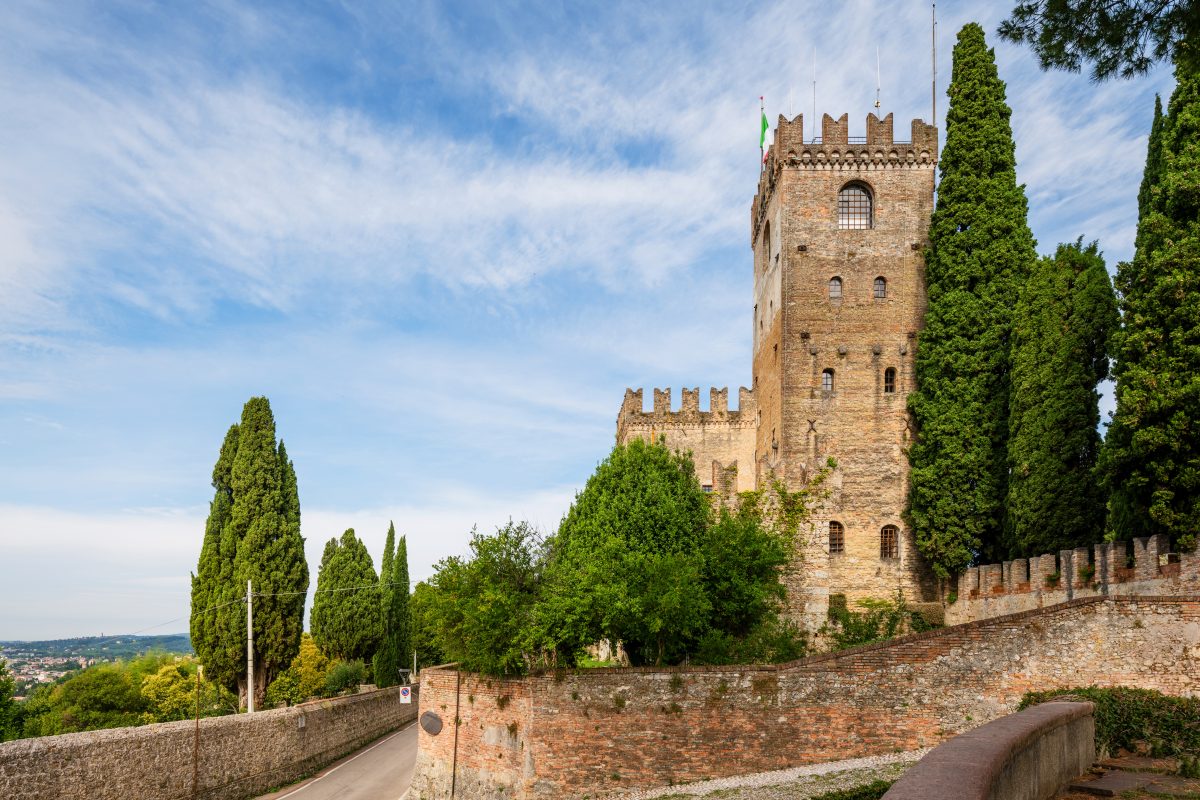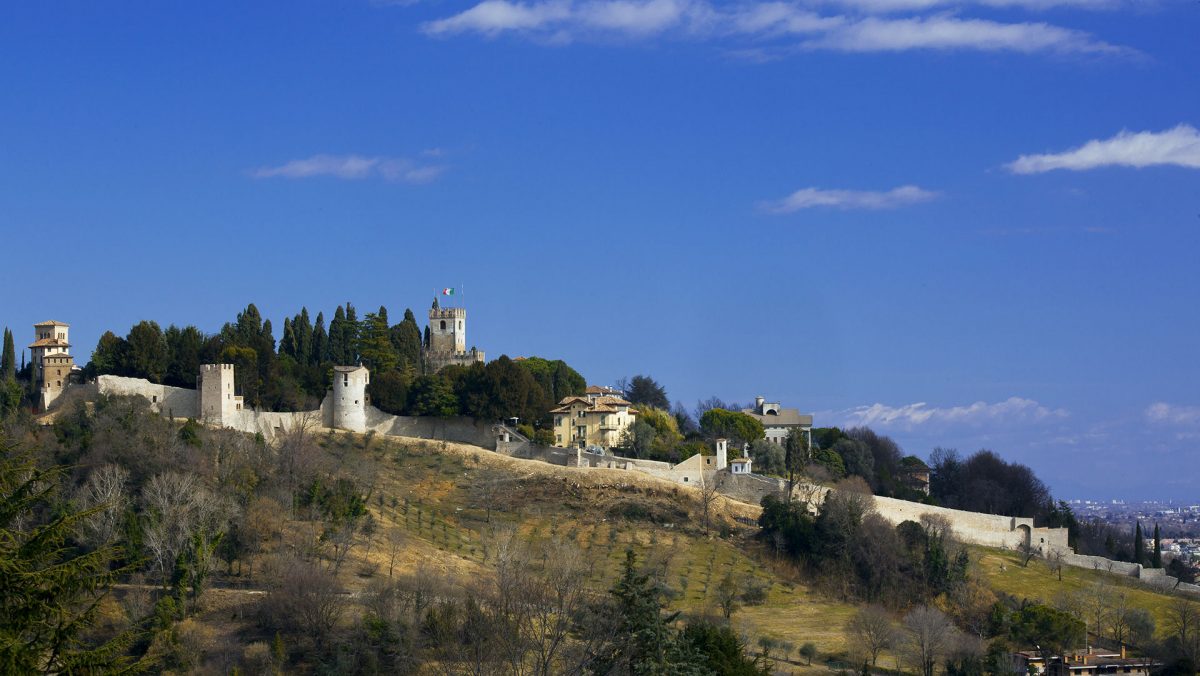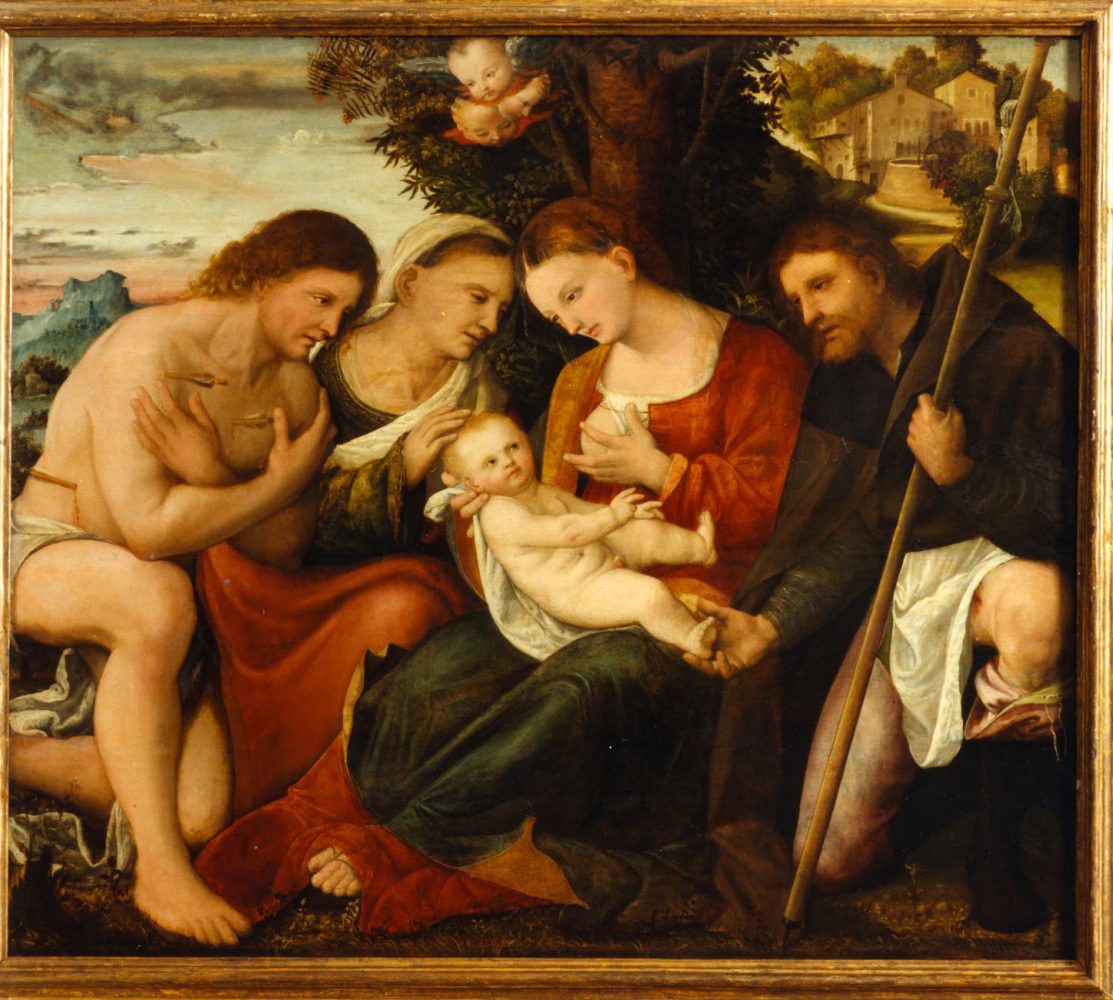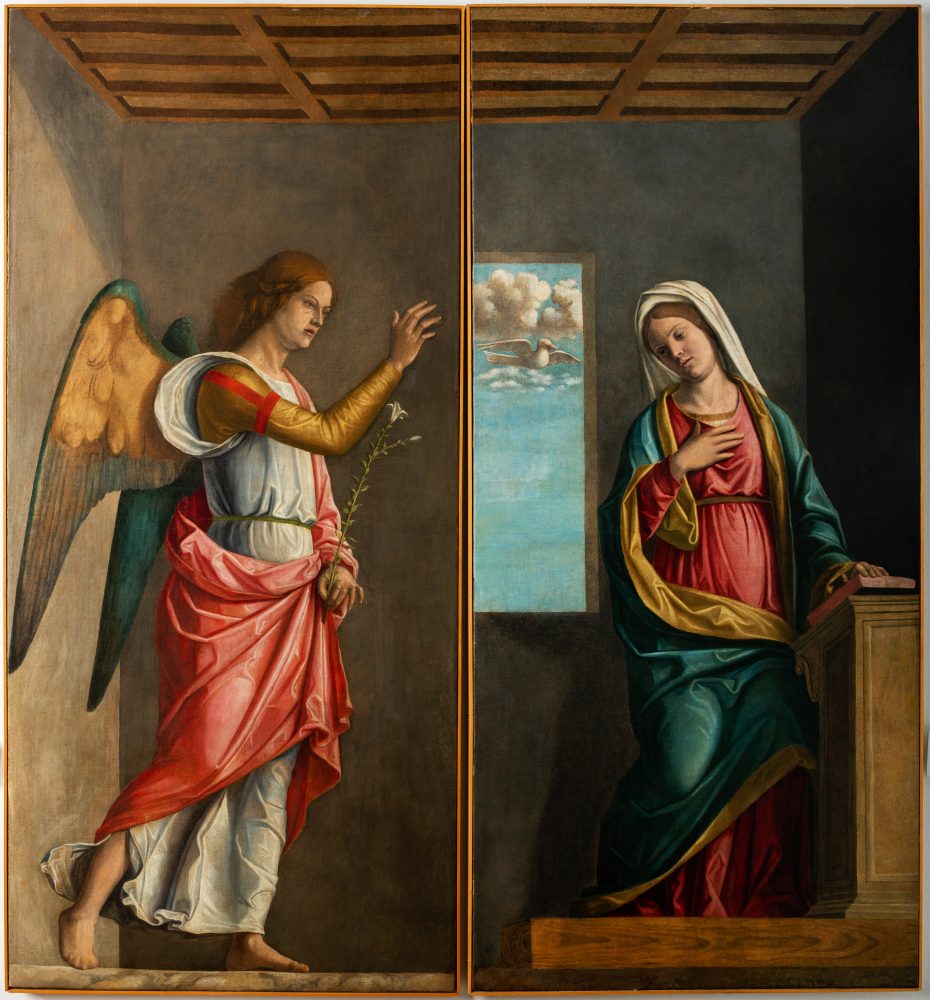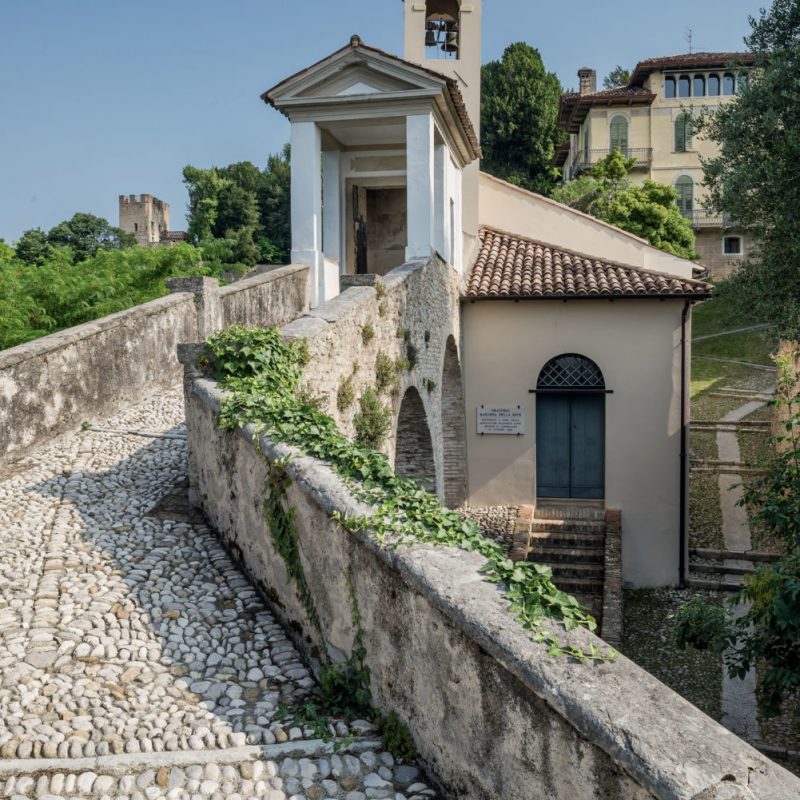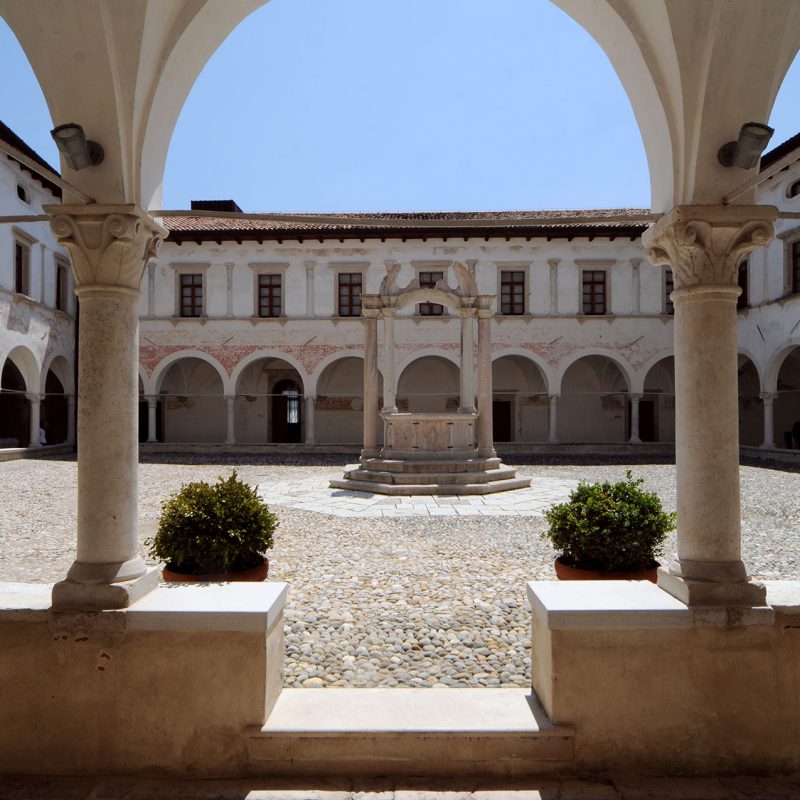The Castle and the Castle Museum

The tower that today identifies the castle on the top of the hill is called "della Campana" because it received the bell that summoned the population and signaled the beginning of the city council. Today the structure houses the City Museum.
The structure, which houses the City Museum, is the result of a series of renovations and reconstructions. Of the original Scaligera foundation (main tower constructed to defend the guards internal court) the deep splayed loopholes remain at the bottom, while the small arched windows date back to the restructuring of 1467; the terminal part, belfry and lookout post, rebuilt after the collapse of 1491, was raised to its present height in 1847-55 with the antistorico crowning of Ghibelline battlements. On the ground floor, we note the internal portal that once gave access to the courts guard; on the first floor you can admire the Venetian chimney room with a “doge’s hat”, with the exit still equipped with card holders towards the court’s patrol path.
The Museum and its history
The first proposal to establish a city museum dates back to 1868, but it was only in 1946 that the castle tower housed any collections, thanks to Cav. Antonio Tocchio. At his death a committee of citizens took over, so in 1952 Cav. Alfredo De Mas merits having initiated the first motivation from that of displaying an historical-local collection to that of a mainly artistic selection. This led to the enrichment of the art gallery, which still today has a precise connotation with respect to the composite material originally used.
Currently the civic museum is composed of: the library and the lapidary which are a collection of frescoes, gravestones including the lion chiseled by the French in the homonymous door (1797); the room known as “Del Camino or Cucina”, for the large hood of a doge’s horn above the hearth, in which, in addition to armors and furnishings in the late Renaissance style, six type-weights of the Venetian Republic are displayed for the control of liquids, grains and other products. In the adjoining room there are some reproductions of ancient geographical maps and eighteenth-century paintings. The upper floors host the archaeological section containing various documents and finds from local history. On the top floor there is the terrace from which you can admire the wonderful panorama that sweeps from the mountains to the sea. Since 1994, the museum has housed an archaeological section consisting of prehistoric and Roman materials found in the city and in the territory. If the castle bears witness to the medieval origin of the fortress, the stone saddle mill, found in 1986 in Ferrera, would lead to a far more distant past (6000 years approx. from today). The Holocene soil, found at 2.5 meters from ground level, has been rich in artifacts: flint tools, pieces of ceramic pottery, as well as meal remains that attest to the popularity of the town, from the Neolithic to the Eneolithic (end IV – III millennium BC), by a human group linked culturally to the last stages of the square-mouthed Pot Culture. From 1976, following the findings of materials on Casa Cima, the human presence on the hill was linked to the recent Bronze Age (XIV-XIII century BC). Subsequent discoveries at Costa and the convent of Saint Francesco confirmed the settlement of terraces on both sides of the hill by human groups dedicated to pastoralism, agriculture and pottery, which can be connected, in terms of types and decorations, to the appearance of the sub-Apennine cultural. In the flat area (in particular in Campolongo), a Roman material was found between 1976 and 1988, which testifies to the presence of rustic buildings in the centuriated area, an extension of the Opitergina area (I century BC – I AD). Among the most important findings we note: a mastodon tooth (Era tertiary 65-2 million years ago) found in the Monticella area; two swords from the middle Bronze Age (XV century BC), derived from the lakes of S. Maria di Revine, the other from the Piave river bed, near Falzè (TV); two axes, found in Colfosco also near the Piave river, one ascribable to ancient Bronze Age (XVIII century BC) and the other to the first Iron Age (VII century BC). To these findings, the funeral stele of Campolongo must be added (placed in the art gallery and dated around the 1st century BC) which most likely reproduces two magistrates.
Frescoes
Among the many works preserved in the Museum, the first to attract the visitor is probably the fresco detached from the apse of the church of S. Antonio Abate of the Canons Regular of Conegliano, now destroyed; work of 1514 Giovanni Antonio Pordenone, which depicts the Maddalena, S. Caterina and two other paintings of saints, currently on the sides of ‘Madonna with Child’ which is different in style from the rest of the context. Also interesting is the series of three frescoes, deriving from Palù di Fossamerlo: works of the XV century, which respectively depict the Madonna enthroned with Saints, the Crucifixion and the Last Supper; the latter is almost certainly the work of John of France who, as in other similar works in the area, painted a laid table on which the presence of only knives stands out (the forks at the time were not yet commonly used) and of the red river prawns which, besides being still today a refined dish of the Treviso cuisine, also have a religious significance, symbolizing the omen of death, the resurrection, and also heresy, all themes related to that of the Last Supper.
Assumingly by the same author is the fresco depicting episodes from the life of St. Peter, detached from a small church in Zoppè of S. Vendemiano; the apparent “modernism”, which the artist manifests in the clothing of the characters represented, is contradicted by the general layout of the work and still influenced by the great masters of the XIV century, that continue to be successful in later centuries, even in culturally peripheral areas.
Picture Gallery
Among the paintings we must mention at least the organ doors depicting the Annunciation, S. Giovanni Battista and S. Taddeo, attributed to the Bottega di Cima da Conegliano and datable between 1510 and 1517. Palma the Younger has instead painted the large canvas depicting the delivery of the keys to San Pietro (1614/1616) which was originally part of a triptych of the Capuchin church of Conegliano. Among the eight paintings donated to the museum in 1987 by Maria Teresa Ancillotto Mazzarolli, the penitent St. Jerome, attributed to Spagnoletto (first half of the seventeenth century) and the Madonna with the Child Jesus, copy of a famous painting from the Correggio dated 1516, the “Zingarella ‘, of which two other specimens are known in Italy and one in Spain.
Noteworthy is the Sacred Conversation by Francesco da Milano, a Lombard painter who was very active in the area in the first half of the century. XVI, the portrait of Ambassador Antonio Foscarini (Venetian school, 16th century) and that of Admiral Vittore Garzoni, painting by Pietro della Vecchia from the century XVII he executed at least two other portraits to exponents of the noble Venetian family, also characterized by the presence of the imposing fluted column placed behind the characters: one is preserved in the National Museum of Krakow and the other at the Hermitage in St. Petersburg.
Among the sculptures, finally, we mention S. Siro and the neophyte of Arturo Martini and the Gloria di S. Antonio, a terracotta oval of Brustolon datable approximately to the year 1695.
Have you visited our Museum? Tell us about your experience using this quick and easy questionnaire. It will only take you a few minutes.
Have you visited our Museum and experienced disruptions? Click here to report the incident.
Image gallery
Video
Useful information
Timetables
Open on Monday 10.00-14.00; Tuesday and Wednesday 14.00-18.00; Thursday-Friday-Saturday-Sunday 10.00-13.00 / 14.00 - 18.00. From 1 June to 31 August: Saturday-Sunday and holidays extended opening until 7.00 pm.
Ticket: full Euro 3.00 / reduced Euro 2.00 / schools Euro 1.00 - The reduction applies to: children and teenagers from 6 to 18 years, university students up to 25 years, people over 65 years, groups over 10 people, disabled people and their carers.
 Add to your itinerary
Add to your itinerary
